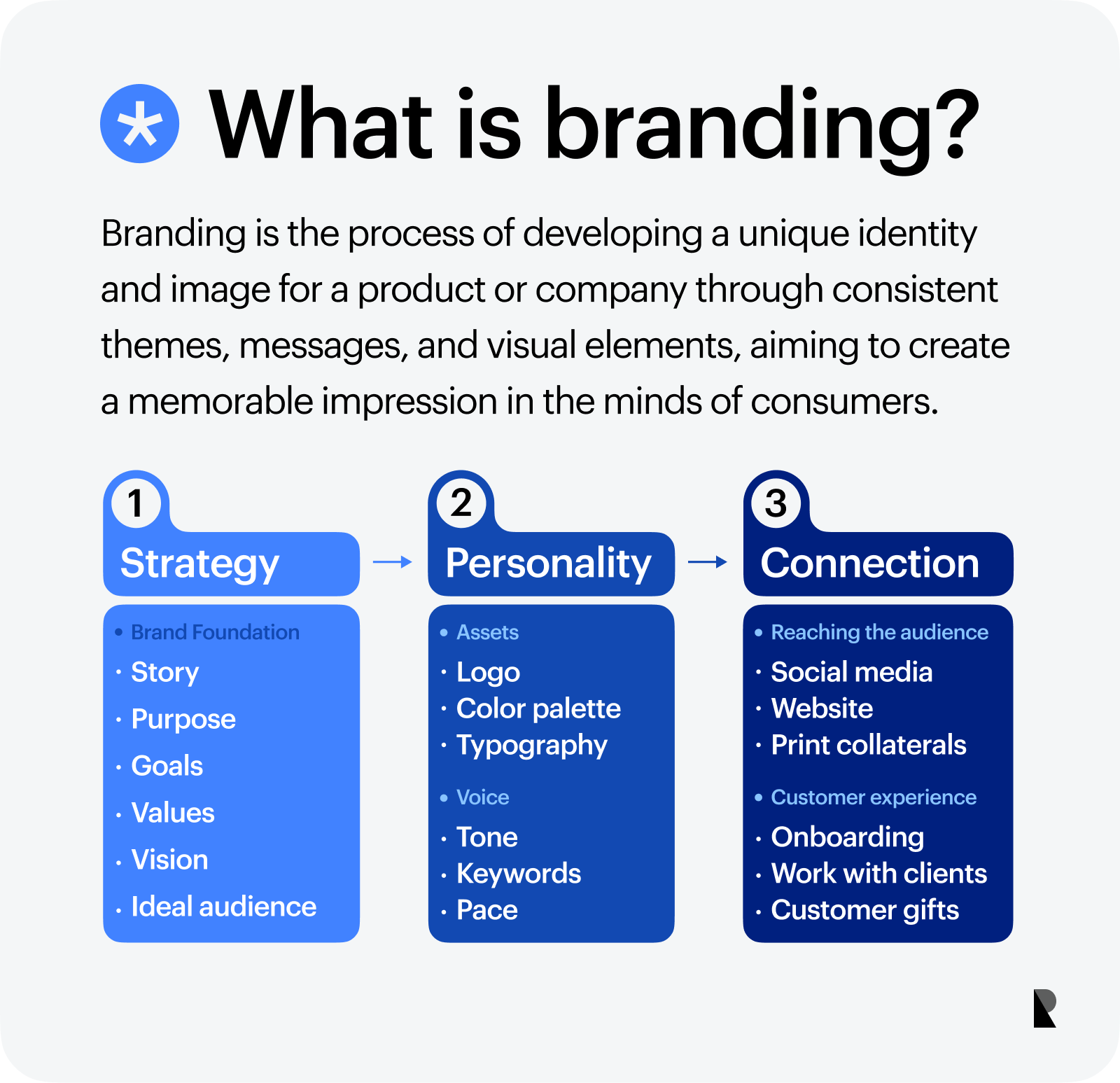How Robust Branding Contributes to Boosted Market Share and Sales
How Robust Branding Contributes to Boosted Market Share and Sales
Blog Article
The Power of Durable Branding: An Overview to Enhancing Your Brand's Strength
A well-defined brand name identification not only sets a firm apart yet likewise promotes trust and commitment amongst consumers. Many companies ignore vital techniques that can further intensify their brand name's strength.
Understanding Brand Name Identity
A brand name identity includes the unique aspects that distinguish a business from its competitors and reverberate with its target audience. This identification is constructed via various parts, including aesthetic elements, messaging, and total brand experience. A cohesive brand identification not just interacts what a firm stands for however also develops acknowledgment and commitment among customers.
Central to brand identity are aesthetic components such as logos, color design, and typography. These components produce an aesthetic representation of the brand that can stimulate particular feelings and understandings. Consistency across systems reinforces brand recognition and grows trust fund.
Additionally, the messaging connected with a brand name, consisting of taglines and interaction style, plays a critical duty fit its identification (Robust Branding). The tone of voice and language used can convey the brand's individuality, whether it is specialist, playful, or innovative
Lastly, the general brand experience, including consumer communications and touchpoints, affects just how customers perceive the brand name. A positive and consistent experience fosters a strong brand identity that can endure market fluctuations and competition. Overall, a well-defined brand identity is important for establishing a meaningful presence in today's dynamic marketplace.
Structure Psychological Links
Developing a strong brand identification serves as a foundation for cultivating emotional connections with customers. By lining up these values with the customers' beliefs, brand names can produce a sense of common function.
Storytelling plays an essential duty in this procedure. Brands that tell relatable and genuine tales can evoke feelings, enabling consumers to see themselves in the brand name's journey. Furthermore, incorporating visuals that mirror the brand's significance can additionally deepen psychological engagement.
An additional effective approach is to customize consumer interactions. Customizing experiences based on client preferences promotes a feeling of belonging and significance. Involving with consumers via social media systems can also improve these psychological connections, as it supplies an area for discussion and neighborhood structure.
Eventually, brand names that prioritize emotional links are much more likely to cultivate lasting connections, causing enhanced consumer retention and campaigning for. By developing meaningful interactions, brand names can change consumers into loyal fans, driving long-term success.
Consistency Across Channels
Keeping uniformity throughout all networks is vital for enhancing brand name identification and trust. When customers come across a brand, they expect a consistent experience, regardless of the platform. This consistency constructs experience, which in turn cultivates loyalty. In today's digital age, where interaction covers web sites, social media sites, email, and offline communications, ensuring that your brand name's voice, visuals, and messaging remain lined up is extremely important.
To achieve this, organizations should establish clear brand guidelines that outline using logos, shade palettes, typography, and intonation. These guidelines act as a referral for all team members and outside partners, making sure uniformity across marketing materials and consumer interactions.
Additionally, regular audits of all interaction networks can assist recognize discrepancies and locations for enhancement. By proactively checking these networks, brands can swiftly attend to incongruities, consequently maintaining a cohesive identity.
Inevitably, a consistent brand presence not only improves recognition yet also cultivates a feeling of dependability amongst customers. When consumers know what to anticipate, they are most likely to involve with and advocate for the brand name, solidifying its placement in a competitive market.
Leveraging Brand Name Storytelling
Brand storytelling works as an effective tool for appealing consumers on click over here a much deeper emotional degree. By weaving stories that show the brand name's values, goal, and character, firms can develop a genuine connection with their audience. A compelling brand tale transcends plain product functions, welcoming consumers to enter into a bigger narrative that resonates with their own experiences and ambitions.
To effectively utilize brand storytelling, services have to determine their one-of-a-kind voice and core message. This story needs to be constantly connected via various networks, guaranteeing placement with the brand's overall identity. Involving stories can be shared via several styles, consisting of social networks, video clips, ads, and blog sites, permitting brand names to get to consumers where they are most responsive.

Gauging Brand Strength

To properly measure brand name toughness, companies can employ measurable approaches such as surveys and analytics tools. Studies can examine brand name awareness and consumer belief, while analytics can track interaction on electronic platforms. In official website Addition, Internet Promoter Score (NPS) offers as an important metric to review consumer loyalty and the probability of referrals.
Qualitative data, gathered with emphasis groups or social media listening, can complement quantitative searchings for, offering a deeper understanding of consumer perceptions. Tracking market share and sales development can better illuminate the brand's affordable standing.
Eventually, a comprehensive technique to gauging brand name strength entails both qualitative and measurable analysis. By regularly reviewing these metrics, brands can make informed choices to boost their positioning, adjust to customer choices, and eventually strengthen their market existence.
Verdict

Last but not least, the general brand experience, including customer communications this article and touchpoints, affects how customers view the brand. Brands that tell authentic and relatable tales can evoke emotions, allowing customers to see themselves in the brand name's journey. Eventually, by leveraging brand name storytelling, services can cultivate loyalty, motivate advocacy, and cultivate a neighborhood around shared worths, hence enhancing their total brand name stamina.
While establishing a strong brand name identity is critical, measuring brand name stamina is equally vital to gauge its efficiency and effect in the industry (Robust Branding). Brand name toughness encompasses numerous metrics, consisting of brand recognition, customer commitment, and perceived value
Report this page